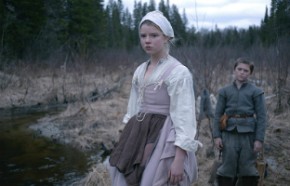Theological horror

Imagine that it’s 1630, and you’re in a Puritan Sunday school somewhere in New England. “Children,” the teacher says solemnly, “have you heard tell of the prideful man who cast aside God’s holy church and the bonds of Christian community to follow his own prideful ways, taking his wife and young children into the wilderness to set himself up against God’s chosen people?” In the movie The Witch (Robert Eggers’s directorial debut), what happens next is pretty much what you might imagine: the prideful man and his family are torn apart by forces of evil that inhabit the woods on the edge of the known world.
All the clichés about witches are here: old hags prey on innocent babies, while sexual temptresses suck the life out of young men. There are animal possessions, midnight naked dances around roaring flames, and suspicions that narrow in on the virginal teenage daughter. But The Witch doesn’t focus on shock or gore; instead it’s visually stunning and completely engrossing—and a true thriller, giving us more suspense than horror.
Back in their European villages people told each other folktales about the dangers of wandering outside the boundaries of civilization. Civilization was a shaky concept in the hardscrabble lives of these 17th-century American settlers, and the folktales fit their circumstances and expressed their fears. The stories reinforced the notion that if they dared to step outside the known world, they risked both physical and moral destruction.





